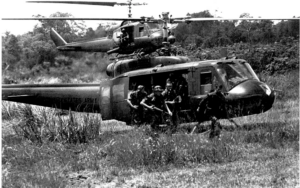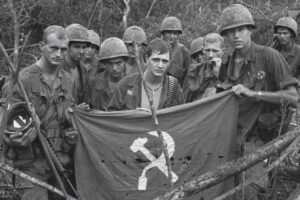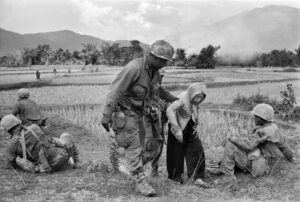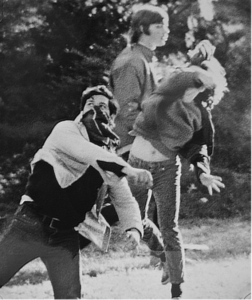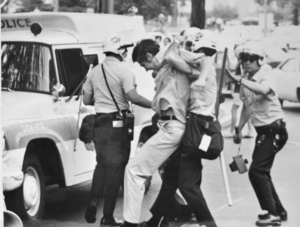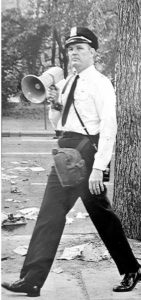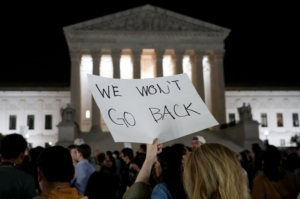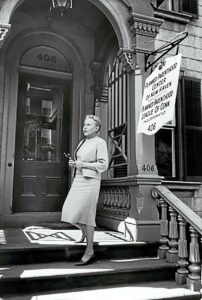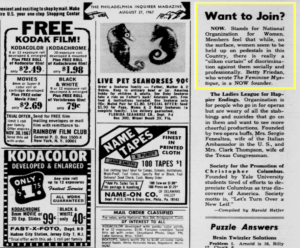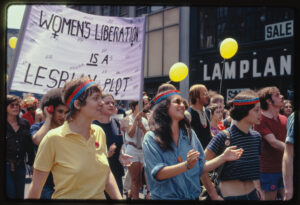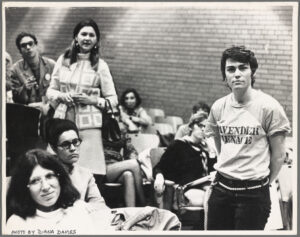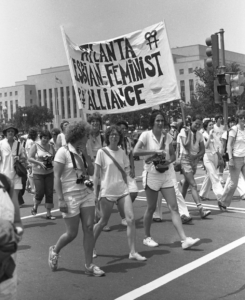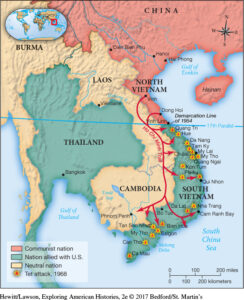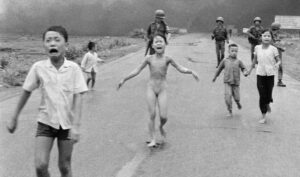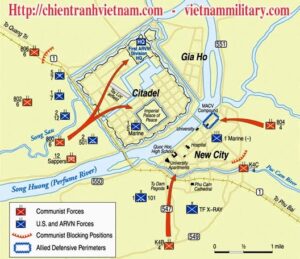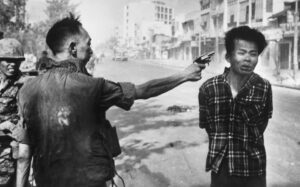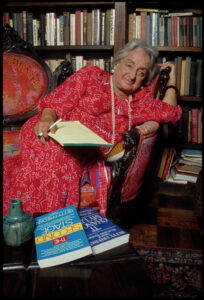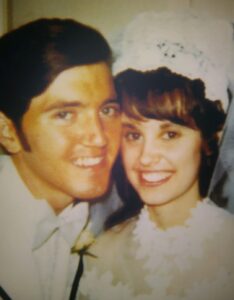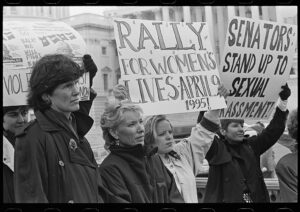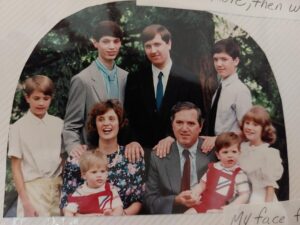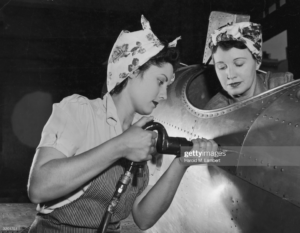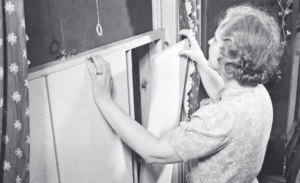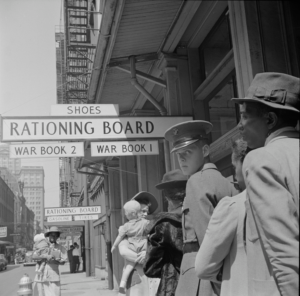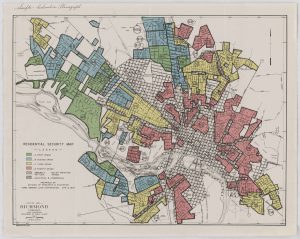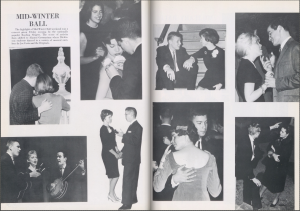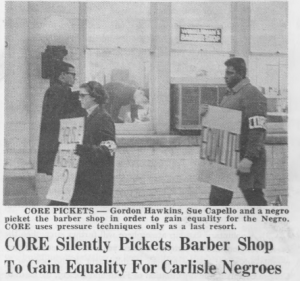by Henry Booth
When Don Bonsper arrived in Vietnam in 1967 with the United States Marine Corps, like others, the first thing he noticed was the heat. “It was very hot, very humid, lots of bugs, bugs at night, hard to sleep,” Don said, “and when the monsoon rains [came], it was just very heavy rains, flooding, mud, so you were living in a [different] environment.”[1] Boyce McDivitt, a dentist in the Navy and a lifelong friend to Don Bonsper, also had his own Vietnam War experience, but rather from stateside, in San Diego.[2] Many others, like Phil Caputo and Larry Heinemann, spoke about the conditions over in Vietnam during their various interviews, including Caputo’s experiences that he wrote in his memoir. H.W. Brands, author of the book American Dreams, uses Caputo’s memoir to bring in a brief overview of the life of a soldier fighting in Vietnam. Brands discusses the Vietnam War at length, although he does it more from a political level rather than discussing the conflict for the soldiers fighting on the ground, or those who were serving back stateside. While H.W. Brands discusses the Vietnam War at length, he doesn’t describe the story of the soldiers on the ground enough, leading to missing elements into why the war in Vietnam panned out in the way it did.
Phil Caputo landed at Da Nang, close to the divide between the Northern and Southern divide in Vietnam, in 1965 and was part of the escalation in Vietnam in 1965. He stayed over in Vietnam until 1966, where a patrol incident with civilians in the village of Giao Tri lead his men to kill an innocent civilian, leading him to go back stateside.[3] Heinemann and Bonsper both arrived during 1967 (Heinemann in March, Bonsper in June). Heinemann, after initially being stationed near Saigon, fought in one of the bloodiest fights of the war at Soui Cut, where afterwards, he was shipped back stateside that March.[4]
Bonsper served with the United States Marines until the end of October in 1967, where in November he became an advisor for the South Vietnamese Marine Corps and served with them through the Tet Offensive.[5] The Tet Offensive of 1968 was a decisive battle in the war, with the United States and South Vietnam repelling an assault by the North but was viewed by the public as a defeat due to the media’s affect. He was eventually shipped home in June of 1968. McDivitt worked at the San Diego naval base from 1967 to 1969, preparing many naval cadets for the war in Vietnam by cleaning and fixing
their teeth, hoping to get them battle ready.[6] Bonsper and McDivitt both grew up in the small town of Portville, New York, and both went to high school together at Portville Central School.
The fighting over in Vietnam was tough, especially with the conditions and the enemy they fought. Many soldiers over in Vietnam felt like they were stranded. “A feeling of abandonment came over us,” Caputo wrote, “The company seemed to be marching into a vacuum, haunted by a presence intangible yet real, a sense of being surrounded by something we could not see.”[7] Brands noted how the jungle made Marines like Caputo feel lost within the jungles of Vietnam, bringing a sense of anxiety over his men. And with Caputo being close to the border of North Vietnam with the war escalating in 1965 on the ground, it was a difficult experience to anticipate. Bonsper added onto this idea when he noted that “when they felt like they wanted to come out and engage, shoot some mortars, shoot some artillery, they could and then they could disappear back.”[8] The hit and run tactics by the North Vietnamese took a major toll on the Marines sanity, for they could face attacks at any time within the dense jungles and rice paddies over in Vietnam. With the war being full tilt in 1967, it was known that the United States had suffered significant losses.
The losses from the hit and run attacks also made a major dent in the Marines morale. “If you just walk around and patrol and look and nothing happens for a number of days and then on the next day there’s an ambush and two or three of your people are killed, and then the enemy just disappears,” Bonsper said, “it’s a real frustration on the part of the troops to feel like you’re constantly a target and that it’s so hard to get even, or to find, and get revenge on the actual enemies.”[9] Without being able to retaliate properly, many soldiers lashed out, which ultimately led to atrocities like Giao Tri in 1966, or My Lai in 1968, where US Soldiers took out Vietnamese civilians. Caputo mentions an instance where an officer in his group had to keep a lieutenant from shooting an elderly woman because she was sharpening stakes that could be used for the various traps the North Vietnamese devised.[10] The war was further complicated because of the Viet Cong, or Vietnamese civilians who were resistant to the South, leading to a further complicated war. Caputo was also involved in an incident at Giao Tri, where his patrol killed an innocent civilian, leading to a trial that eventually led him to be dishonorably discharged in 1966 after a false statement.[11] In My Lai, a group of American soldiers ran roughshod over the small village of My Lai, and slaughtered approximately three hundred Vietnamese civilians, leading to immense backlash from the American public.[12] Because the American soldiers struggled to get revenge on their North Vietnamese enemies, the pent-up anger could lead to events like My Lai.
Bonsper also noted how he served with the Vietnamese Marines as an advisor after November of 1967. “The [Vietnamese] marines were terrific,” Bonsper said, “the Army, we operated with the Army a couple of times, the South Vietnamese Army, and they were not up to the standard of the marines.”[13] The lack of true support from the South Vietnamese Army could’ve affected the morale of many soldiers in the sense that they were fighting for a country that wasn’t adequately prepared to defend itself, making the Americans’ job a whole lot harder, ultimately dragging American morale down. Brands discusses the war and conditions on the ground, but he doesn’t elaborate enough on how the soldiers’ morale was damaged by the hit and run tactics and conditions, which is a point that should be emphasized more, especially if it led to atrocities like Giao Tri or My Lai.
Confusion was a major aspect to the conflict. Caputo mentioned how his men were ultimately confused by the conflict. “There certainly were [discussions about our mission] because we were constantly getting these changing mission orders,” Caputo notes, “after the first couple of weeks, we weren’t sure what we were supposed to be doing over there.”[14] Many of the soldiers over in Vietnam had no idea what they were supposed to do, and with the lack of coordination between units, the battlefield was often a chaotic place. Many soldiers also had difficulty keeping up with the issues at home, however many had knowledge of the protests going on. Heinemann noted how they knew of the protests over in Vietnam, but never really cared much because of the difficult fighting.[15] Some soldiers also had difficulty keeping up with events at home. “There was a newspaper called Stars and Stripes and that would get distributed sometimes, [but] we had no way to communicate with the outside world,” Bonsper recalled, “it was just what we got, a little bit out of that newspaper and what people would tell us.”[16] McDivitt, still in San Diego, noted that he knew of the protests, but he never really kept up with them in depth due to the amount of work he had stateside.[17] Despite the soldiers knowing of the protests from 1967 through 1969, many members of the military had little reason to care about it because they weren’t super in touch with the protests like people are today, making it hard for the protests to truly impact them as much.
Brands mentioned how many politicians during the war had a defeatist mentality. “We are alien to their culture,” said Senator William Fulbright, “where the French failed, we will fail.” [18] Despite many politicians thinking the war was going bad, there were mixed feelings on the ground and at home over whether everyone supported the war. Some like Bonsper thought the war was going well during his tours in 1967 and 1968. “I felt like we were doing what we were being asked to do, we were doing it well,” Bonsper said, “and I had no idea the political side and whether we were winning or losing, whatever.” [19] While Bonsper was confident in how the war was going, Heinemann was the opposite in his belief of how the war was turning out. Heinemann saw the war effort as a way of radicalizing more Vietnamese against the American cause, and with the destruction of Vietnamese farmland and resources, ultimately making the war effort a losing fight because of the damaged relationship.[20] While Brands discusses the political aspects in terms of supporting the war, he should have honed his focus on the soldiers’ perspectives, for they have a larger impact on the actual fighting and history of the war. In terms of supporting the war, Bonsper was a supporter of the war initially, but later lost his support of it. “I supported the war when I went to Vietnam,” Bonsper wrote, “My support never really changed until long after the war was over and many of the facts about the start of the war became public knowledge.”[21] His friend Boyce McDivitt also supported the war from home; however he didn’t want to fight in it because he didn’t want it to affect his relationship with his wife Kay.[22] However Heinemann was vehemently against it. “The war was [messed] up, that was clear,” Heinemann said, “We were not very sophisticated on the rightness and wrongness of the war, but everyone did know that it was [stupid].”[23] Both viewpoints show a significant difference even among the military, making Vietnam a tough conflict to win. If some parts of the United States military weren’t on board with the war, then it makes it difficult to win, especially against a fighting force that is stealthy, and knows their terrain well.
While Brands discussed the politics behind the Vietnam War well, he should have focused more on the soldiers and their perspectives while fighting the war. Brands does discuss the conditions of the war briefly by including Caputo’s experience, but he should have focused more on the soldiers’ experiences. Because Brands didn’t explain the human experience over in Vietnam enough, he didn’t discuss the communication issues, condition issues, and differing attitudes and support around the war, ultimately leading to the events that played out. Wars are won with the soldiers on the ground, so their experiences are the ones that need to be talked about, so not explaining it fully can lead to misinterpretations about the American experience over in Vietnam and allows people to forget the sacrifices soldiers made over in Vietnam.
[1] Interview with Don Bonsper April 25th, 2022, via Zoom
[2] Interview with Boyce McDivitt April 21st, 2022, via phone call (notes)
[3] Herzog, Tobey C.. 2008. Writing Vietnam, Writing Life : Caputo, Heinemann, O’Brien, Butler. Iowa: University of Iowa Press. Accessed May 11, 2022. ProQuest Ebook Central. 192
[4] Herzog 197
[5] Interview with Don Bonsper on April 25th, 2022, via Zoom (recorded and transcribed)
[6] Interview with Boyce McDivitt April 21st, 2022, via phone call (notes)
[7] H.W. Brands, American Dreams (New York, NY: Penguin Books, 2011). 144
[8] Interview with Don Bonsper on April 25th, 2022, via Zoom (recorded and transcribed)
[9] Interview with Don Bonsper on April 25th, 2022, via Zoom (recorded and transcribed)
[10] Brands 145
[11] Herzog 192
[12] “The My Lai Massacre,” PBS (Public Broadcasting Service), accessed May 10, 2022, https://www.pbs.org/wgbh/americanexperience/features/vietnam-my-lai-massacre/.
[13] Interview with Don Bonsper on April 25th, 2022, via Zoom (recorded and transcribed)
[14] Herzog 15-16
[15] Herzog 65
[16] Interview with Don Bonsper on April 25th, 2022, via Zoom (recorded and transcribed)
[17] Interview with Boyce McDivitt April 21st, 2022, via phone call (notes)
[18] Brands 153
[19] Interview with Don Bonsper on April 25th, 2022, via Zoom (recorded and transcribed)
[20] Herzog 65-66
[21] Email from Don Bonsper May 2nd, 2022 (quoted from Email)
[22] Interview with Boyce McDivitt April 21st, 2022, via phone call (notes)
[23] Herzog 65
Transcript:
“‘Finally, in the latter half of the month, ‘ – April 1965 – ‘someone decided that since the Viet Cong would not come to us, we would go to them.'” – Philip Caputo quoted on page 143 in American Dreams by H.W. Brands
Interview Subject(s):
Boyce McDivitt, United States Navy Dentist from 1967 to 1969, who often fixed the teeth of many soldiers who went over to fight in Vietnam
Don Bonsper, United States Marine Corps from 1967 to 1968 who fought in Vietnam. Childhood friend of Boyce McDivitt
Interviews:
Boyce McDivitt: Phone Call (Notes) on April 21st, 2022
Don Bonsper: Zoom Call (recorded transcription) on April 25th, 2022
Email on May 2nd, 2022
From Boyce McDivitt’s phone call (notes):
When asked about what he did in the Navy:
- Naval Training Center from 1967-1969
- Checked guys who were going into the Navy for dental issues
- Worked his tail off, leading to a promotion to a Commanding Officer by his Executive Officer
When asked why he joined the Navy:
- Wanted to keep himself out of potential harm over in Vietnam
- Knew of dentists who went over and were killed
- Was married to his wife Kay at the time and didn’t want to lose that with the Vietnam War
- Supported the war, but conscientiously knew that he could keep out of Vietnam if he was productive for the Navy Stateside
When asked about how in touch he was to the war’s protest efforts:
- Aware of it
- Not super in touch due to lack of connectedness
- Cited that work and other priorities kept him from watching news as much as he does now in his retirement years
- Boyce supported war, but wasn’t willing to lose his life over it, especially with a wife and being able to help from the states
- Not super in touch due to lack of connectedness
When asked about if he kept in touch with his friends (Dick Anderson [Uncle Hoke in interview] and Don Bonsper:
- Never kept up with them during the war
- Didn’t have any letters unfortunately
- Dick Anderson had diaries of what he and Boyce discussed, but was unable to access them
- Don never got to discuss with Boyce the war
- Don did write memoires about his time over in Vietnam
When asked whether any of his friend group (the Vikings) had any knowledge of the true status of the war during the war:
- All three friends had little knowledge during the war
- All had no knowledge of the true extent of the war until years after
- Had some general suspicions that it wasn’t going well, but all three had zero clue over true extent of the war
- All had no knowledge of the true extent of the war until years after
From the Zoom Interview with Don Bonsper (transcribed):
Q: One of the first questions I had is … first off, when did you start serving in Vietnam?
A: I got there in June of 1967…
Q: … What was the conflict like over [in Vietnam]?
A: … It was guerilla warfare, so there was fighting in jungles, rice paddies, and it was the enemy, the other side, had two major elements to their force and they had the Viet Cong, … and those were sort of people that were fighting, [and] then the North Vietnamese Army, the NVA, …which was more like a real army, not as informal as the Viet Cong.
Q: … What was the war like over there, like life when you weren’t fighting, … what [were] the tensions like in your camp? Was it pretty high morale [or] was it pretty low morale? Can you describe that a little?
A: [Yes] I think the morale was good, morale was fine. The conditions we were living under were pretty difficult. It was very hot, very humid, lots of bugs, bugs at night, hard to sleep, and when the monsoon rains would come, it was just very heavy rains, flooding, mud, so you were living in a [different] environment. The conditions were very very hard.
Q: … Did those conditions give the enemy more of an advantage or did you think it benefitted your troops better?
A: I think it gave them an advantage. For one, they knew the area much better, they knew the terrain and they could pick and choose when they engaged with us. Much of our activity was built around taking and holding various pieces of real-estate, pieces of ground, and then just moving on and giving it up so the enemy was able to just lay low, stay in the jungle, and when they felt like they wanted to come out and engage, shoot some mortars, shoot some artillery, they could and then they could disappear back, so I think they tough conditions one, they were used to it, they lived there, it was their home, their space, so I think they had the advantage.
Q: … Did any of the pick and choose attacks of the North Vietnamese, … did that ever chip away at the morale of your troops?
A: It certainly does, [because] if you just walk around and patrol and look and nothing happens for a number of days and then on the next day there’s an ambush and two or three of your people are killed, and then the enemy just disappears, it’s a real frustration on the part of the troops to feel like you’re constantly a target and that it’s so hard to get even, or to find, and get revenge on the actual enemies, so [yes], it does chip away.
Q: …were you able to stay connected to …the events back at home because I know there was a lot of protest of the war back at home, so were you able to stay connected with that, or not really?
A: Not really. I think we knew about it. There was a newspaper called Stars and Stripes and that would get distributed sometimes, [but] we had no way to communicate with the outside world, it was just what we got, a little bit out of that newspaper and what people would tell us, what we would hear so it wasn’t like something we were constantly being bombarded with, any protests or demonstrations.
Q: … Were you ever able to communicate with my Grandpa Boyce during the war, or not really?
A: No not really. I’m not sure exactly where he was. I think he was on a hospital ship as a dentist, and I was on land the whole time, so we never did communicate. There was no way to make physical contact, and we didn’t have any of the contact means that exist today… we could communicate with people back home by [writing] a letter so we could write a letter and put it in an envelope and give it to someone who was going back to some other place where it could be mailed. We could mail tapes, little cassette tapes, back and forth which is what my wife and I did… the turnaround time, the time it took to actually get to somebody and then if the person was going to answer anything in that letter, the time it took to get back, …were talking a couple of weeks.
Q: Towards the end of your time in Vietnam, could you sense whether the war was going well for your troops, or whether you guys were getting beaten, what was sort of the thought process of that?
A: My tour was different. It was divided into two parts. There was a first part where I was with the US Marines, and a second part where I was an advisor with the Vietnamese Marine Corps, so I had two different experiences of leaving. I left the US Marines to go to the other unit. Honestly in both cases I felt like we were doing what we were being asked to do, we were doing it well, and I had no idea the political side and whether we were winning or losing, whatever. I was in the Saigon area during the Tet Offensive, and that’s when the Vietnamese launched a major attack through the country, … and they really got hurt militarily. They took so many casualties, it was a big defeat for them militarily, but it turned out to be a big political victory because then the people back home felt like we were not really doing that well if they could attack all over the country in such massive numbers. But no, I never felt like we were really losing, I never felt, … I was just doing my job, … it’s kind of hard to say that, but I had a job to do, I think I did it well and my troops did it well at the same time.
Q: …What was your time as an advisor for the Vietnamese Army like?
A: Well it was really quite a good experience. There were two advisors with [the] marine battalion, so there were about eight hundred Vietnamese Marines, and two Americans, and that was it, and we each worked with a counterpart and advisor is kind of a bad word because, or lets say a misleading word because we really didn’t advise them because they knew more about what was going on than we did. They had been fighting for years, they were extremely good, these marines were an elite unit, and so my role was more to help with supporting arms, artillery, … all the aircraft which would support the battalion were US aircraft, and so I was on the ground [and] was controlling those aircraft. If the battalion commander needed something that would come from Americans, he would tell me, and I would get it, I would control it and I relied on them to protect me. I only carried a pistol, I never expected to actually be shooting when I was an advisor. My role was to make sure that I got to support the battalion leader, and they were good.
Q: … Were you relatively in tune with the … larger plan [in Vietnam]?
A: No. Not at all. I barely knew what was going on in my battalion [in] the US battalion. I was in tune with the Vietnamese marines better, but not the big picture. No. Never.
Q: …Could you actually tell me [about] the morale of the South Vietnamese Army?
A: Well I don’t really know about the army. I know about the marines. The marines were terrific. The army, we operated with the army a couple of times, the South Vietnamese Army, and they were not up to the standard of the marines.
Q: … And so they weren’t really concerned about losing [the] war, they were pretty confident?
A: … That’s a really good question. I don’t know. I don’t know what they thought, but when the peace, when the war ended in [1973], and there was a two year period where nothing was going to happen I think the Vietnamese marines knew that they were going to be in serious trouble if North Vietnam attacked, and of course that’s what happened. They all did their very best, and they paid a very very heavy price for it. And the US didn’t do the things that it said it was going to do, in terms of providing equipment and support. Once the war ended officially, the US just kind of backed out of things that it agreed to.
Q: … So essentially the US left the South Vietnamese marines, and basically their entire military out to dry after leaving?
A: Yes.
Q: … So after the war, what were your discussions with my Grandpa Boyce like about the war.
A: … We never really talked about it. Never talked about it in any kind of detail. He’s read my books. I wrote a couple of books, so he read the books, he has an idea of what I went through.
Outside Resources:
Thayer, Carlyle A. 2019. “North Vietnamese Diplomatic Posture during the Vietnam War.” Asia Policy 14 (3): 184-187. [ProQuest]

